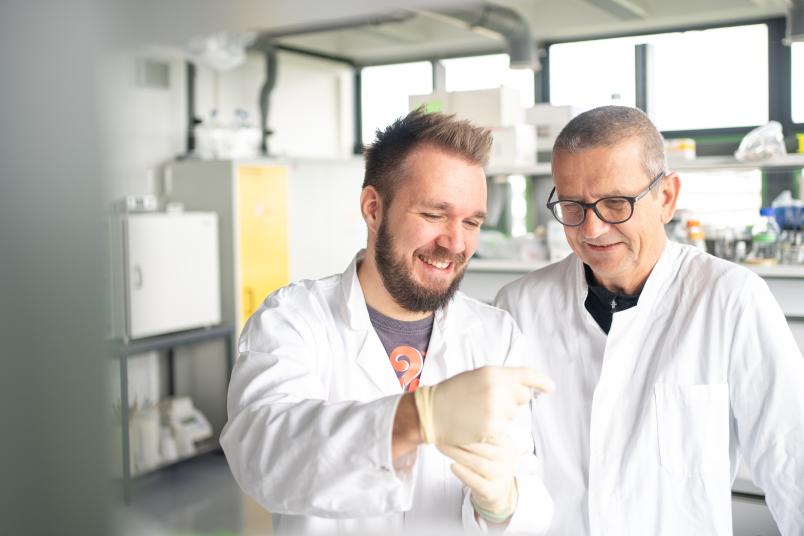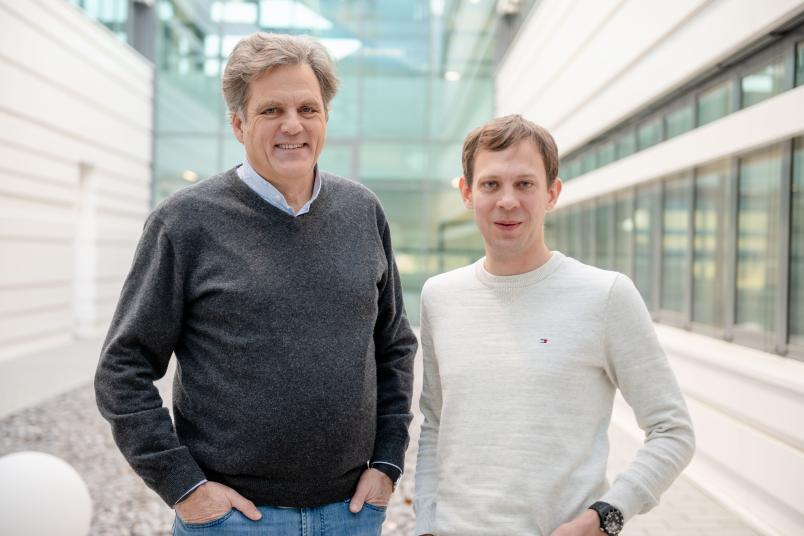
Optogenetics
A new tool for switching proteins on and off
Proteins can be controlled with light of different wavelengths. Even several at once, thanks to a new tool.
Light-sensitive proteins, also known as optogenetic tools, can be switched on and off by light pulses, thus triggering specific cellular processes. A research team at Ruhr-Universität Bochum (RUB) has characterised a new optogenetic tool, the protein parapinopsin, which can be switched on and off with very weak and short light signals. The excitation wavelengths required for this purpose differ greatly from those used by other known optogenetic tools. Consequently, it is possible to use two such tools simultaneously. The teams headed by Professor Stefan Herlitze and Professor Klaus Gerwert report on these findings in the cover story of the journal ChemBioChem from 2. March 2020.
Protein from a fish
While the researchers had previously mainly focused on investigating the protein melanopsin, they now used parapinopsin. “This tool is an opsin, i.e. a G protein-coupled, light-sensitive receptor from the pineal organ of the Japanese lamprey,” explains Dennis Eickelbeck from the Department of General Zoology and Neurobiology at RUB. The researchers used electrophysiological and optical methods to analyse the receptor. By combining these experimental approaches, the researchers at the Department of Biophysics created a first 3D structural model of parapinopsin using computer-aided methods. “This structural model will in future enable us to formulate hypotheses on the dynamics of the complex molecular mechanisms of parapinopsin using biomolecular simulations,” elaborates Dr. Till Rudack.

In the course of this RUB collaboration, the researchers demonstrated that lamprey parapinopsin – which they named “UV-Lamp” – can be used to switch on or off a specific G protein signalling pathway with light of different wavelengths. “We use UV light to switch on and light in the blue wavelength range to switch off,” says Dennis Eickelbeck.
Simultaneously with other tools
Since the wavelength range used for switching on is far in the UV range, UV-Lamp can theoretically be used simultaneously with other optogenetic tools. “For example, in the same experiment we could control a signalling pathway using UV-Lamp with UV and blue light and use another optogenetic tool with green and red light for another signalling pathway,” explains Dennis Eickelbeck. “In future, the 3D model will enable us to analyse and manipulate the wavelength dependence of parapinopsin in order to adapt the protein for further optogenetic applications,” predicts Klaus Gerwert.
Of equal interest to the researchers is the fact that the protein is extremely light-sensitive. Accordingly, extremely short light pulses of low intensity in the range of milliseconds are sufficient for the continuous control of the corresponding signalling pathway. As a result, the potential harmful effects of light radiation on the cells are reduced.